► MY2018 Maser GranCabrio
► CAR’s verdict of Sport model
► Droptop priced at £105k
It’s 35 degrees. There aren’t any clouds. I can feel the skin on my forehead tightening by the second. We’re in a vineyard in Brescia, Italy, walking towards a 2018 Maserati Grancabrio.
We’re about to find out why, eight long years after its introduction, this quad-seat drop-top GT was deemed worthy of yet another minor nip-and-tuck.
That isn’t to say we’re unhappy with our lot, though. The GC is still a Pininfarina-penned stunner from pretty much any angle, in our case coated in sparkling new Blu Assoluto three-ply coachwork.
What are the big tweaks for 2018, then?
New front and rear bumpers, different headlights and upgraded multimedia. This isn’t a step change.
The range has also been simplified, so now there’s the option of Sport, which we’re testing here, and MC, which features harder single-phase suspension and an exhaust borrowing design elements from the Maserati GT4 racing car.
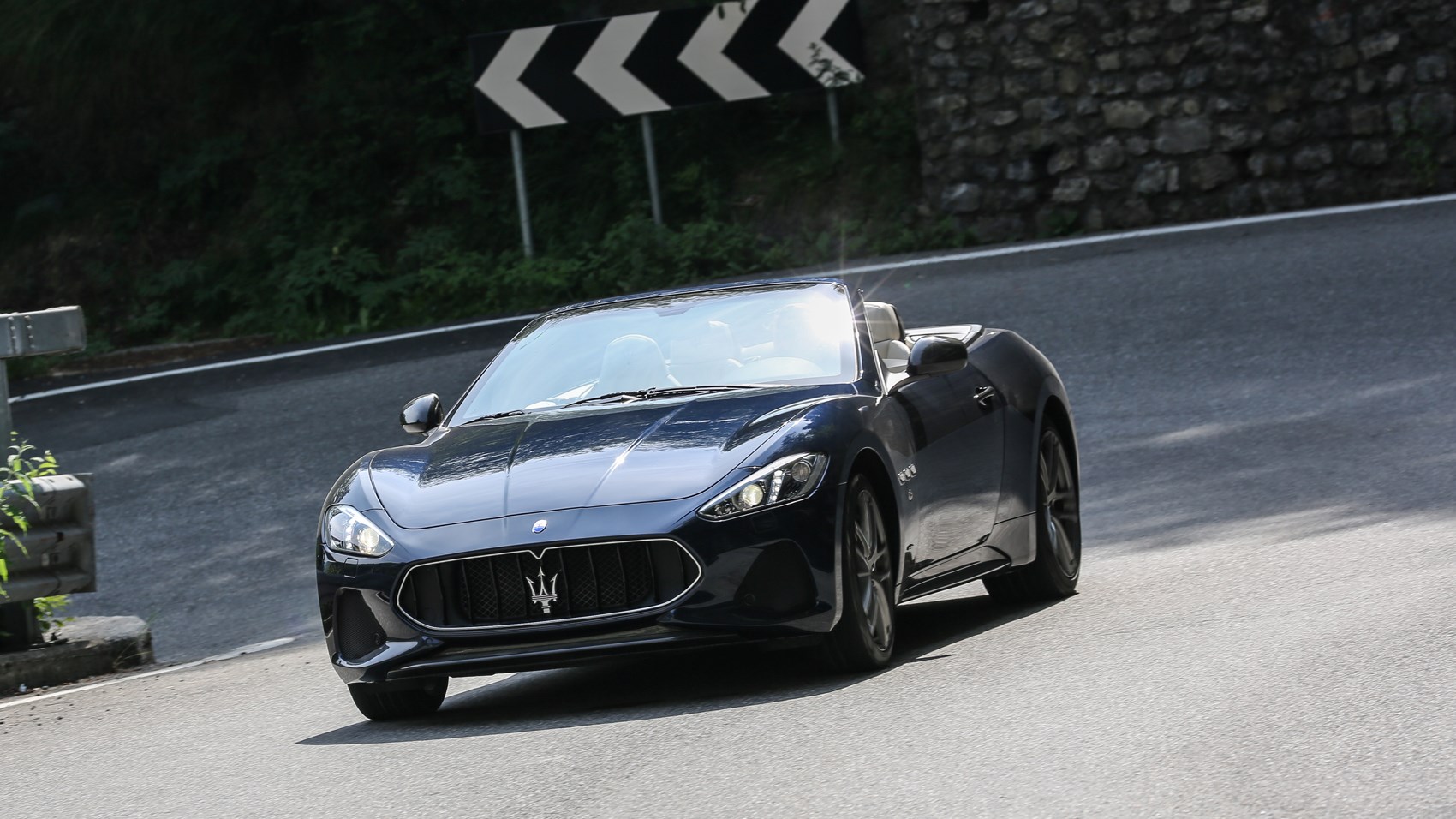
The latter is definitely better to look at than the system on our Sport car, but at the expense of sounding a little too gruff for the cabriolet’s character. It works better on the hardtop Granturismo, which also has a noticeably more rigid shell that suits the harder suspension set-up.
There’s no MC Stradale superbruiser either, and that old automated manual transaxle gearbox has been consigned to the annals of history.
Back to the ‘new’ Grancabrio…
It still follows the recipe of grand touring Maseratis, built by Modena from the ‘50s to the present day.
That means it’s got a long bonnet, two pairs of perches, a large characterful engine and rear-wheel drive. Sounds good to us.
And goodness it does make a great noise. Turn the key (an actual key – the first indication you’re dealing with a premium car designed in the previous decade) and the sole engine option in both Granturismo and Grancabrio line-ups begins its performance.
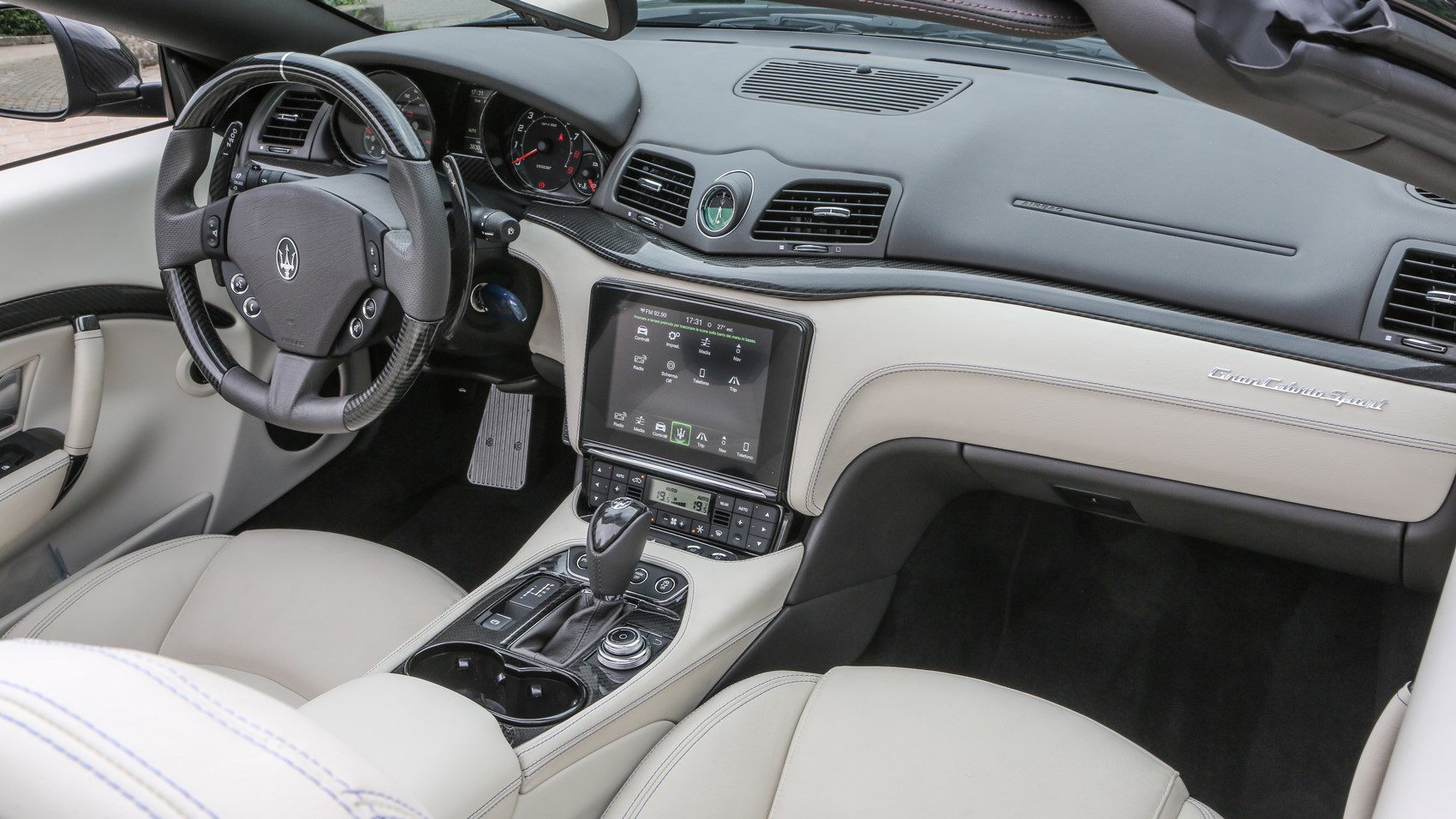
A whinnie from the starter motor gets it spinning and Woomp! You’re straight into a burbling tattoo that only a nat-asp V8 can muster.
This hand-built-in-Maranello Ferrari motor, with its unique Maserati tuning, cross-plane crankshaft and firing order, is a thing of great amusement even at walking pace. It’s a fantastic pedestrian safety device – people simply stop and stare.
Losing our bottle
Pulling the gearlever from P to D wasn’t quite as much fun. Maserati had very kindly left bottled mineral water in the car so while our skin dehydrated (my fault for forgetting the factor 50), the rest of our bodies wouldn’t.
Trouble is, even these relatively squat bottles fouled access to the selector, meaning we had to crane our arm over in such a contorted fashion we almost had a black-eyed co-driver to explain away.
This minor obstacle tackled, we moved off towards Brescia’s grape-laden mountains. We’d a long route planned into the new 8.4” multimedia screen, which again took us back to days gone by.
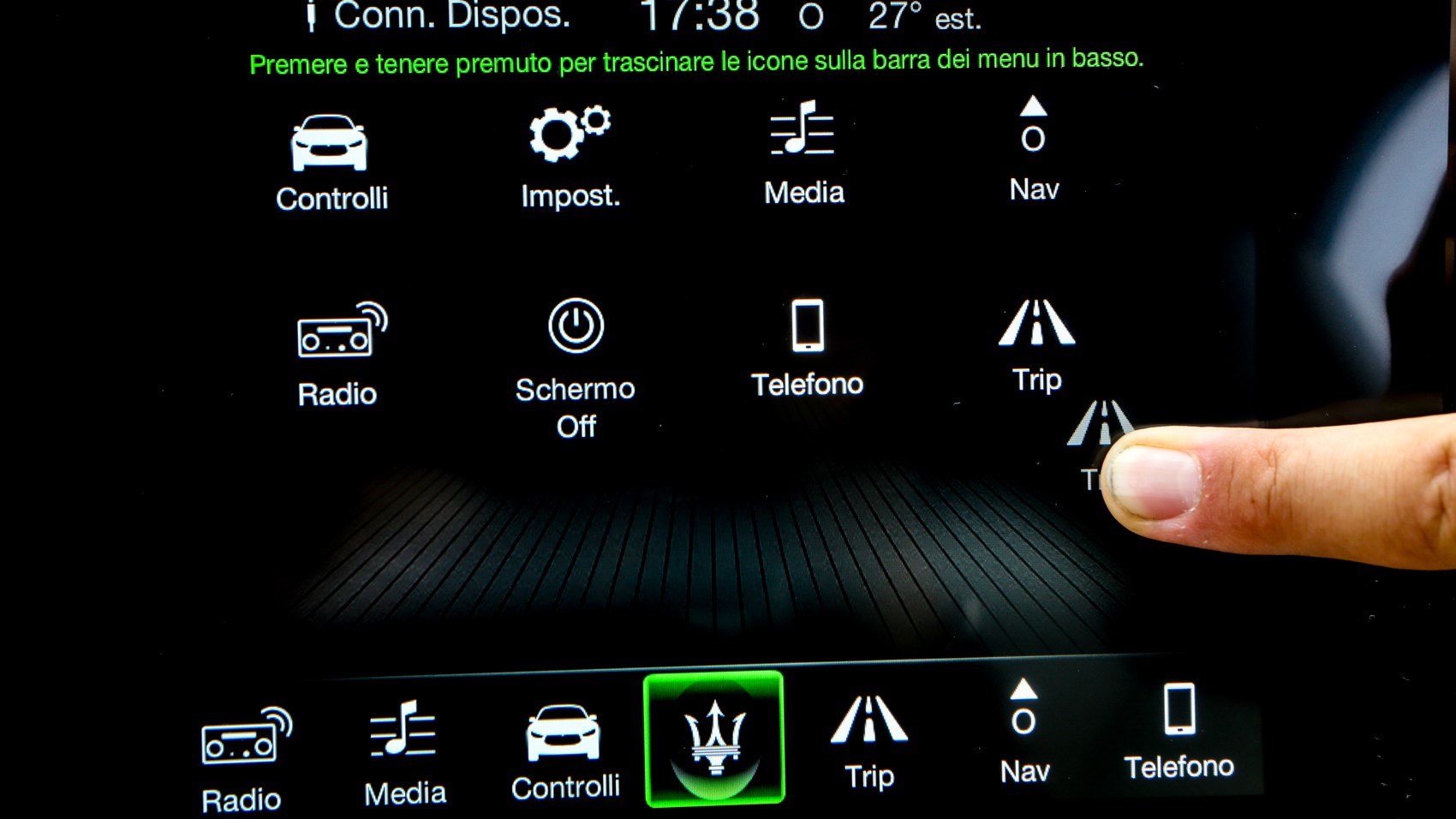
You see, with the ignition off there’s an oddly-shaped black area on the dash in which to house the touchscreen, but said system’s screen (the same as in the recently updated Ghibli and Quattroporte along with the Levante SUV) is perfectly rectangular. This means it doesn’t reach anywhere near the outer edges of the black area, and thus looks oddly aftermarket.
And while we’re on the subject of old-fashioned, this gearbox; it’s quite clearly not of modern design.
Tell us more about this dino ‘box…
It’s a hydraulic torque-converter six-speed auto from ZF and while it’s clearly been tweaked and tuned to within an inch of its life for the 2018 Grancabrio, it’s decidedly dim-witted against modern efforts. We’re not even sure there’s another carmaker still using it, but if there is, do please write in and let us know.
However, this ‘box does work well with the Grancab’s laid-back character. Sure, there are more efficient, but do you really pine for the instantaneous cogswappage of a twin-clutcher in this sort of application? There’s plenty of enjoyment to be had in the pause between power deliveries – all the better to enjoy the engine’s prodigious performance in bite-sized chunks.
You don’t want to drive this car at 100%, you see. Maserati claims the motor weighs just 175kg, which is all well and good, but just look at the GC’s kerbweight in the spec table below. Not exactly at Continental GTC levels of scale-tipping, but this isn’t a lightweight car.
Great to drive, but not flat-out
That results in an unavoidable heft most evident when changing direction at speed. Maserati has done everything in its power to keep things in check, with beautifully eloquent hydraulic steering and progressive brakes, but the Grancabrio remains a GT so that final few percent of cornering performance is lost in the name of comfort.
And actually it is an extremely pleasant place to be. The seats – adorned with pillow-soft leather – are particularly good for long-distance jaunts, though the size of their base makes reaching the electric adjustment controls a touch challenging.
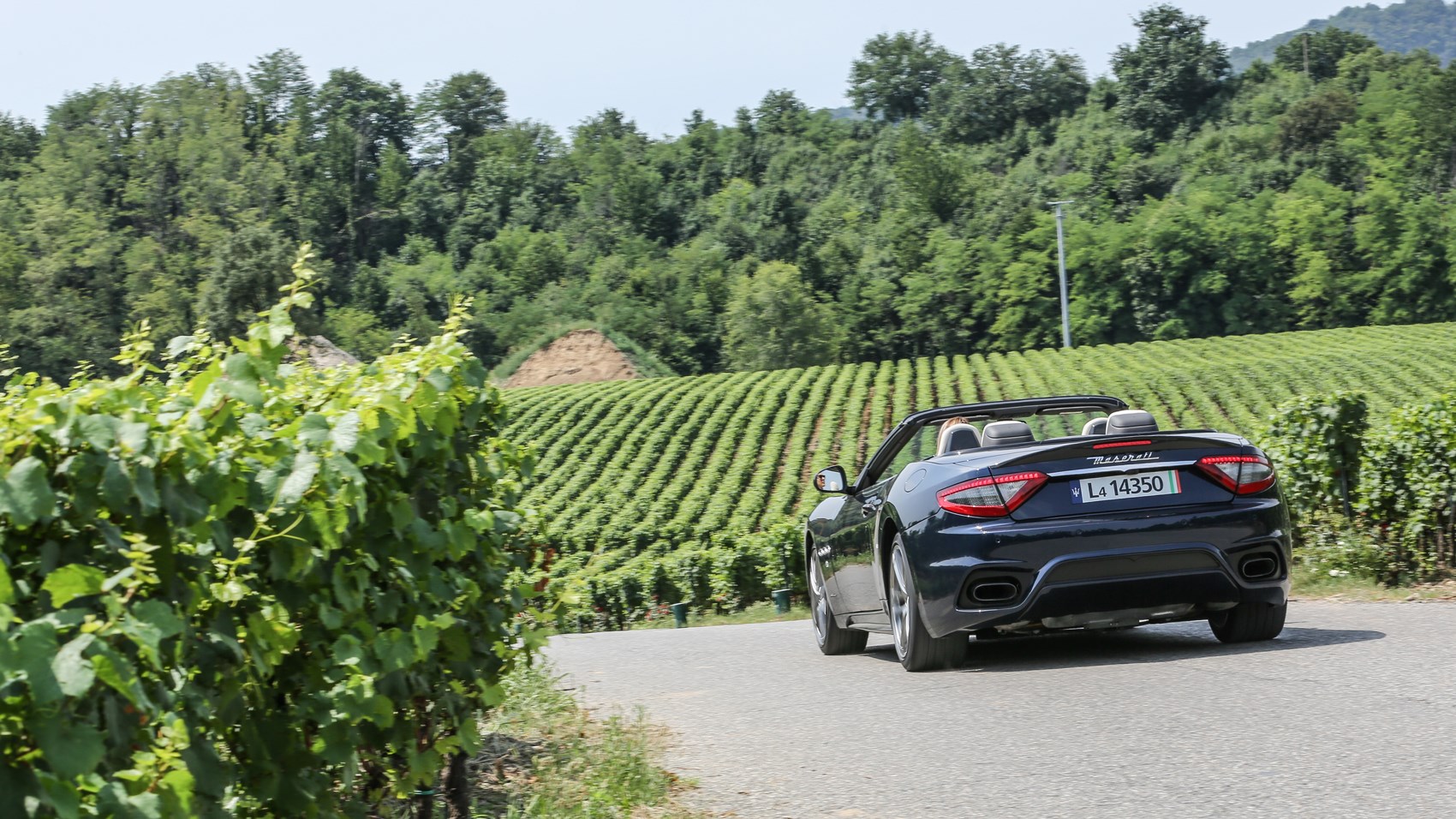
Even selecting Sport mode – one of countless buttons dotted around the confusing cabin layout – didn’t throw its manners into a tailspin. We’d suggest most driving should be done thus enabled, because the exhaust’s actuator opens earlier in the rev range and the drivetrain sharpens so it’s more enjoyable.
However, Sport on the Autostrada at 80mph it tends to hang onto fifth a little too long, which had us flipping back to the standard set-up. The cabin’s well-isolated at these sorts of speeds with the roof down, though.
Carbon considerations…
We were a little sceptical about the amount of (optional) carbonfibre on the car we were testing. The black wonderweave was everywhere, from the sill covers to the steering wheel, which felt a little like trying too hard.
The shift paddles of the same material, on the other hand – mounted on the steering column where they should be – are ace.
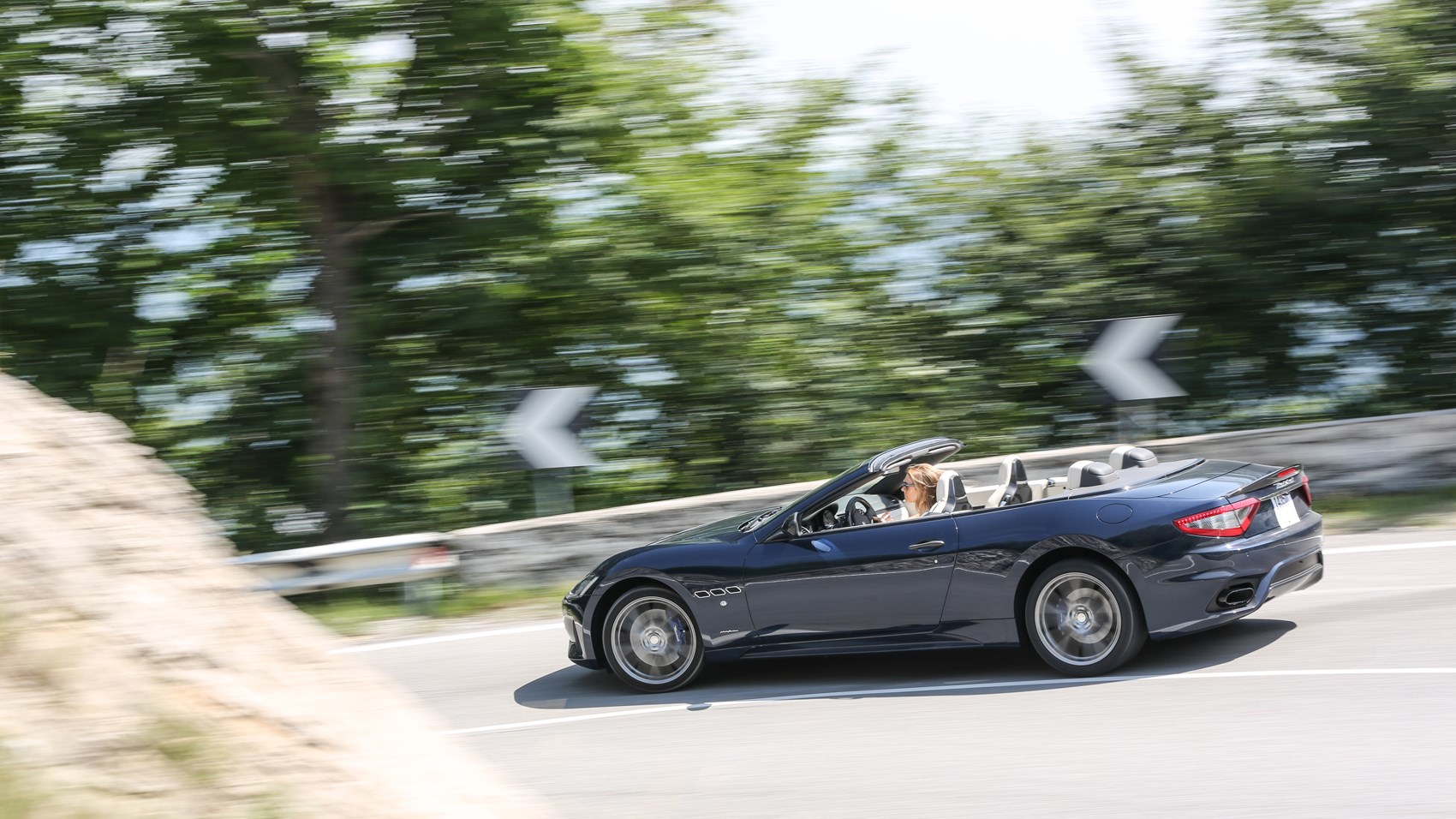
We found ourselves constantly tugging the left-hand one when decelerating, even in town at slow speeds, commanding the ‘box to shift down with the associated bark from the motor. Sounds childish; IS childish.
A closed-road section of our route allowed us to stretch the engine’s performance to maximum using manual shifts, but the slow gearchanges quickly frustrated here. Slow down. Enjoy this comfortable cruiser for what it is.
Verdict
The Grancabrio is in an odd period in its lifecycle. It’s already a modern classic, yet you can buy it brand new.
It’s definitely not a car we’d suggest you buy with pragmatism in mind, but then no Maserati is. If you’re after a four-seater open car that’ll make the right bits fizz, it fits the bill admirably.
Read our other Maserati reviews here